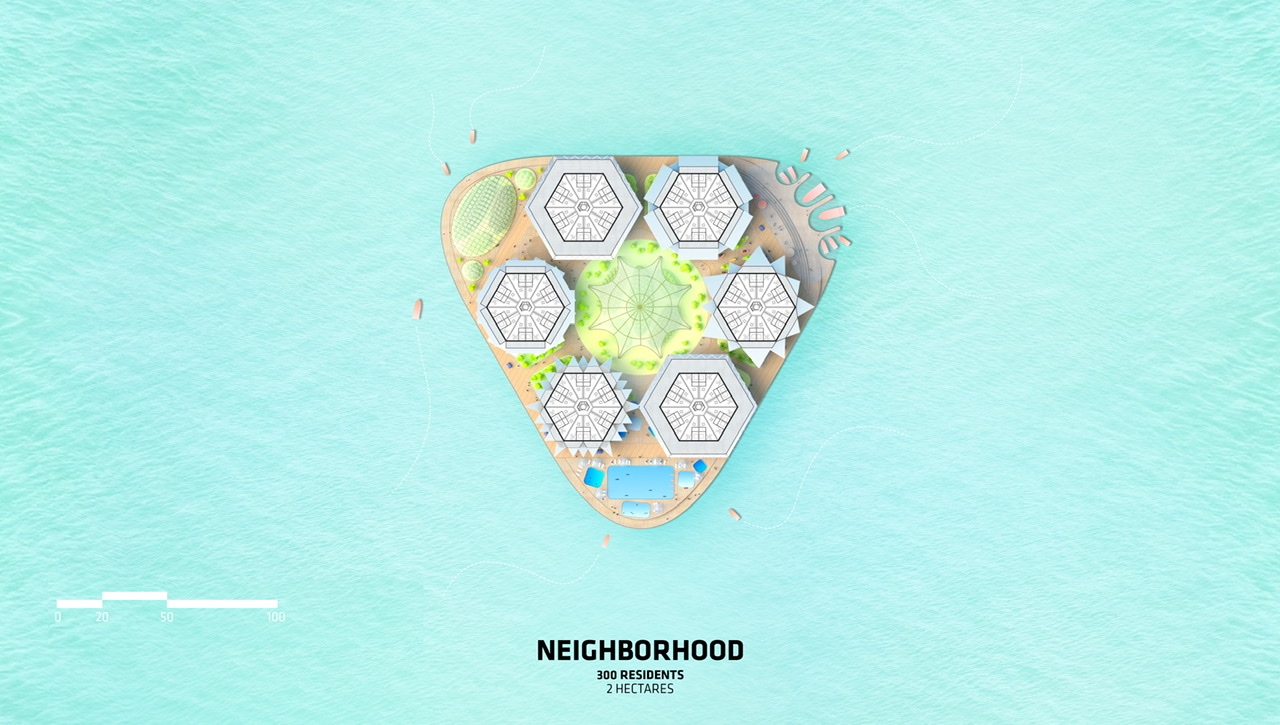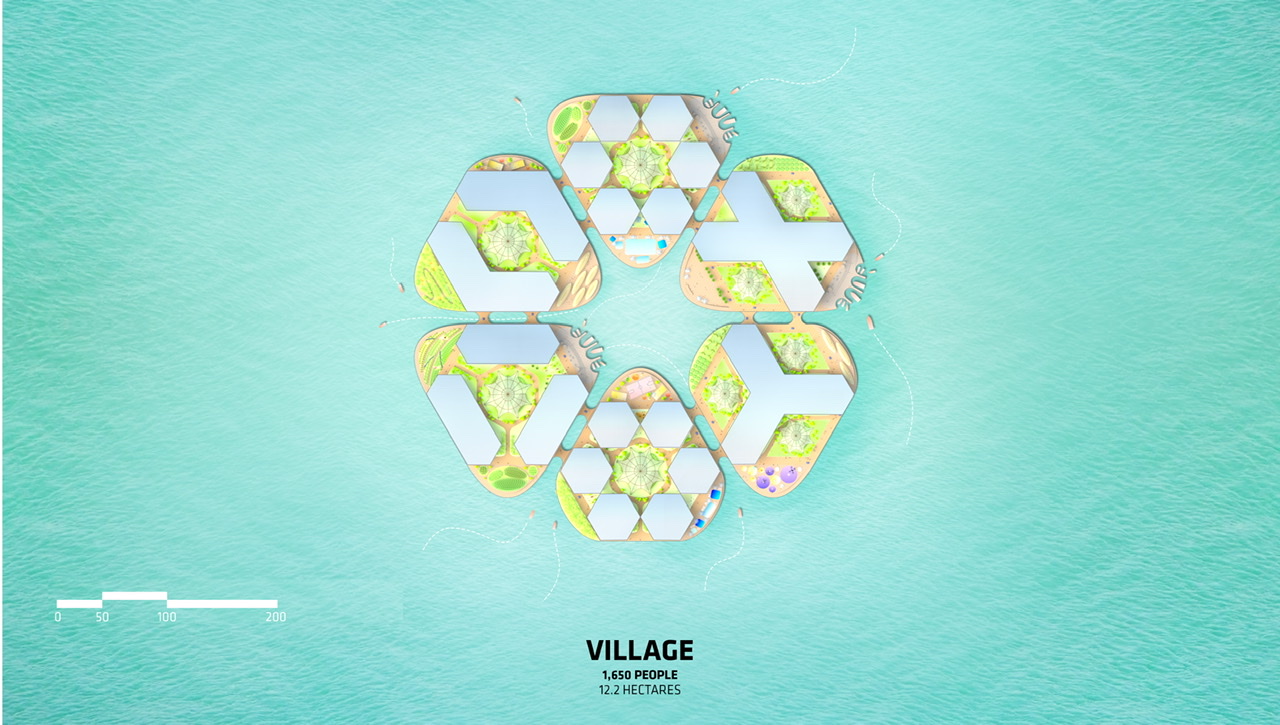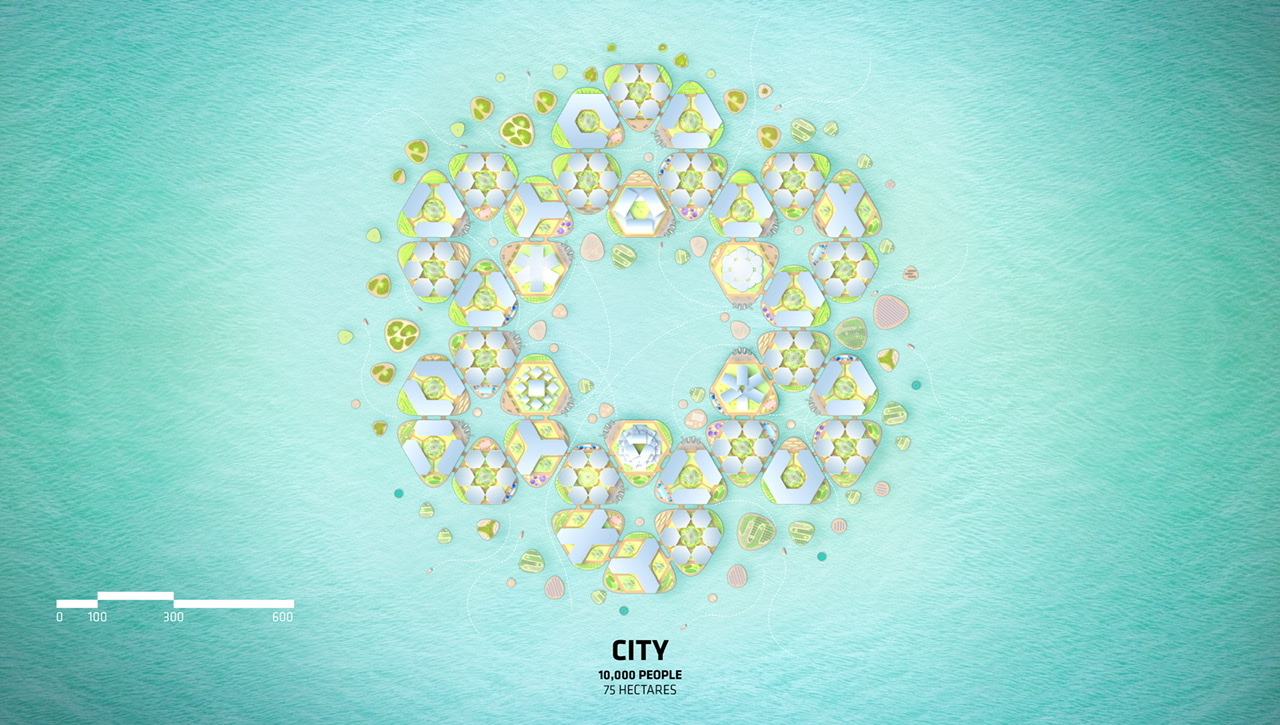
- Sustainable Planet -
- 6mins -
- 394 views
South Korea approves plans for flood-resistant ‘floating city’
Spurred on by COP26 and seeking to innovate breakthrough solutions for coastal cities threatened by sea level rise, the South Korean city of Busan, UN-Habitat and OCEANIX sign historic agreement to build world’s first prototype sustainable floating city.
Historic Initiative to Create Sustainable Floating Cities
Busan Metropolitan City (South Korea), UN-Habitat and OCEANIX signed a historic agreement to build the world’s first sustainable floating city prototype. Busan mayor Park Heong-joon, the Executive Director of UN-Habitat Maimunah Mohd Sharif and OCEANIX CEO Marc Collins Chen signed the Memorandum of Understanding (MoU) through video conference while in their residing countries on 18 November, 2021.

The floating city is envisaged as self-sufficient flood-proof infrastructure that rises with the sea
Coastal cities are on the frontlines of climate-related risks. Flooding is destroying billions of dollars worth of infrastructure and forcing millions of climate refugees to leave their homes. The challenge is huge: two out of every five people in the world live within 100 Km, or 62 miles of the coast, and 90% of mega cities worldwide are vulnerable to rising sea levels.
The floating city is envisaged as flood-proof infrastructure that rises with the sea and produces its own food, energy and fresh water with fully integrated zero waste closed-loop systems.
The main contents of the MoU include the roles of building the sustainable floating city prototype:
- Busan Metropolitan City as an administrative supporter for the project
- UN-Habitat supporting the floating city prototype project utilising its role as an international organisatio
- OCEANIX as project operator by conducting a feasibility study, location analysis, project promotion and more
OCEANIX plans to discuss the project with domestic and overseas expert consultative groups. The synergy effect of Busan, bidding for World Expo 2030 will be considered as well.
The MoU was made after Busan accepted UN-Habitat’s request to participate as partner city in the project to build a sustainable floating city prototype last July. The city expects that it will create good jobs and revitalise its economy.
The vision of the world’s first floating city for 10,000 residents was first unveiled in April 2019 at a UN Roundtable co-convened by UN-Habitat, OCEANIX, the MIT Center for Ocean Engineering, and the Explorers Club.
Source: Busan.go.kr
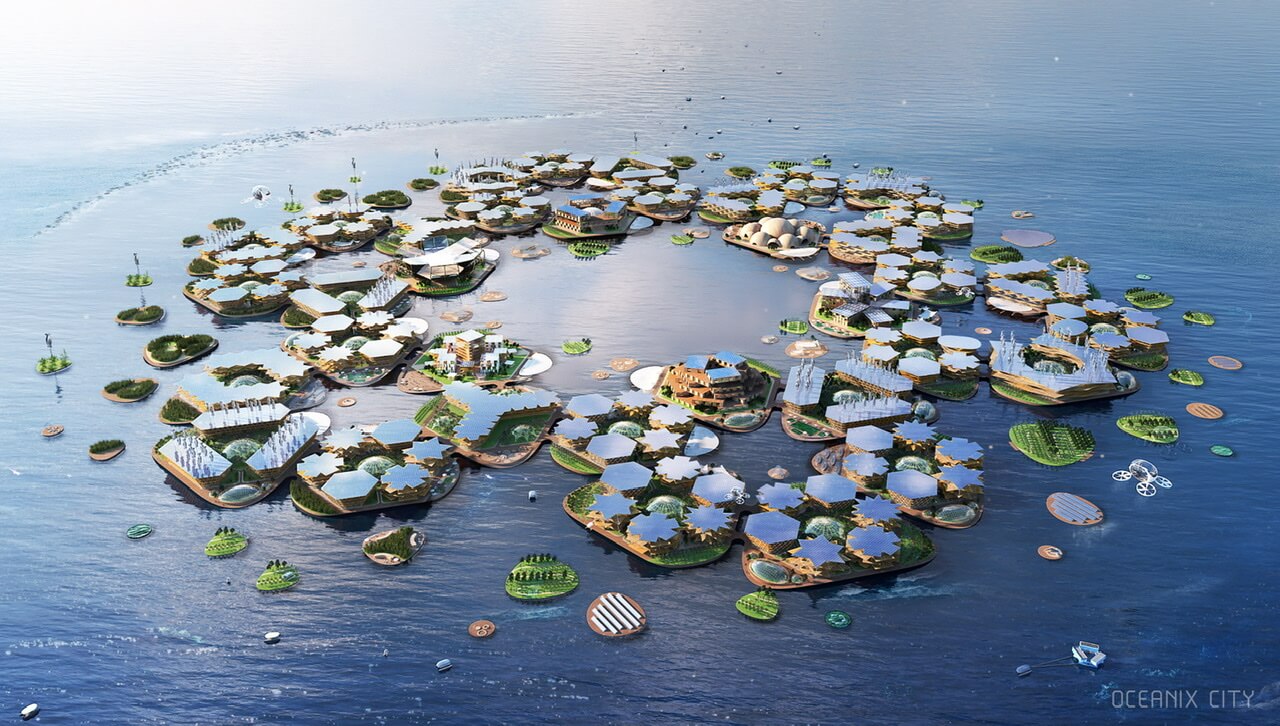
OCEANIX CITY DESCRIPTION
The ocean is under threat from land reclamation. As coastal cities struggle to cope with rapid population growth, many simply pour sand into the ocean to create new land. Unfettered coastal urbanisation is destroying millions of hectares of the ocean and marine life; close to 50% of people in the world live in coastal areas.
The rising sea and climate change are compounding the problem. Ninety percent of the world’s largest cities will be exposed to rising seas by 2050. The vast majority of coastal cities will be impacted by coastal erosion and flooding, displacing millions of people, while destroying homes and infrastructure.
OCEANIX is taking bold steps towards a more resilient future. As part of UN-Habitat’s New Urban Agenda, OCEANIX CITY is a vision for the world’s first resilient and sustainable floating community for 10,000 residents on 75 hectares (185 acres).
Designed as a man-made ecosystem, it is anchored in the Sustainable Development Goals of the United Nations, channeling flows of energy, water, food and waste to create a blueprint for a modular maritime metropolis. The city is designed to grow, transform and adapt organically over time, evolving from neighborhoods to cities with the possibility of scaling indefinitely.
Modular neighbourhoods of 2 hectares create thriving self-sustaining communities of up to 300 residents with mixed-use space for living, working and gathering during day and night time. All built structures in the neighbourhood are kept below 7 stories to create a low center of gravity and resist wind.
Every building fans out to self-shade internal spaces and public realm, providing comfort and lower cooling costs while maximising roof area for solar capture.
Source: OCEANIX
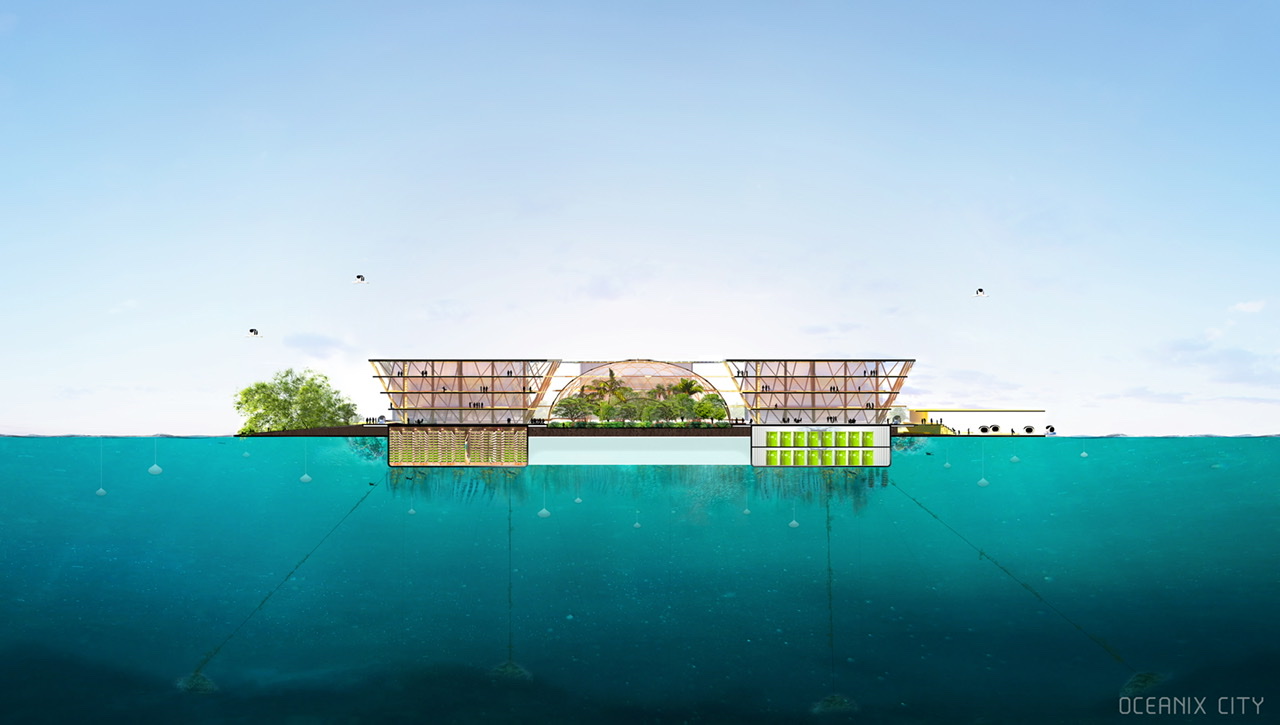

The first OCEANIX Cities are calibrated for the most vulnerable regions around the globe
Communal farming is the heart of every platform, allowing residents to embrace sharing culture and zero waste systems. Below sea level, beneath the platforms, biorock floating reefs, seaweed, oysters, mussel, scallop and clam farming clean the water and accelerate ecosystem regeneration.
By clustering six neighbourhoods around a protected central harbor, larger villages of 12 hectares can accommodate up to 1,650 residents. Social, recreational and commercial functions are placed around the sheltered inner ring to encourage citizens to gather and move around the village. Residents can easily walk or boat through the city. Aggregating to reach a critical density, six villages connect to form a city of 10,000 residents with a strong sense of community and identity.
A larger protected harbour is formed in the heart of the city. Floating destinations and art, including six specialised landmark neighbourhoods with a public square, market place and centers for spirituality, learning, health, sport and culture create destinations drawing residents from across the city and anchoring each neighbourhood in a unique identity.
All communities regardless of size will prioritise locally sourced materials for building construction, including fast-growing bamboo that has six times the tensile strength of steel, a negative carbon footprint, and can be grown on the neighbourhoods themselves.
Floating Cities can be prefabricated on shore and towed to their final site, reducing construction costs. This paired with the low cost of leasing space on the ocean creates an affordable model of living. These factors mean that affordable housing can be rapidly deployed to coastal megacities in dire need. The first OCEANIX Cities are calibrated for the most vulnerable tropical and sub-tropical regions around the globe.
Their website states proudly, ‘We build for people who want to live sustainably across the nexus of energy, water, food, and waste. We build smart, but most importantly, we build a thriving community of people who care about the planet and every life form on it. Humanity can live in harmony with life below water. It is not a question of one versus the other.’
Source: OCEANIX
